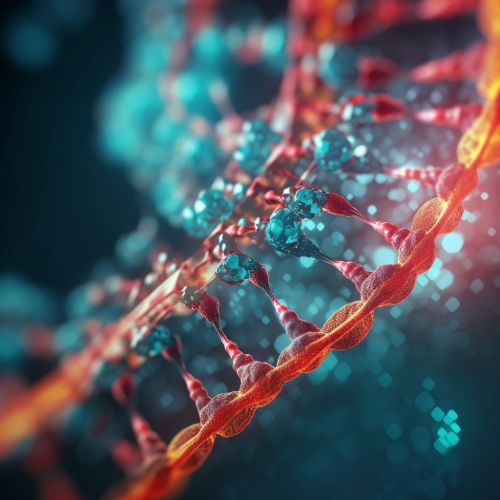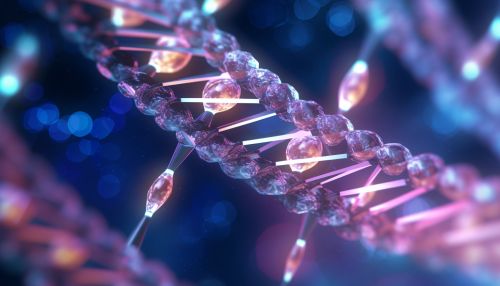RNA transcription
Introduction
RNA transcription is a fundamental process in the life of all organisms. It is the first step in the central dogma of molecular biology, which describes the flow of genetic information within a biological system. Transcription is the process by which the information in a strand of deoxyribonucleic acid is copied into a new molecule of messenger ribonucleic acid (mRNA). This mRNA then serves as a template for the synthesis of proteins, the workhorses of the cell.


Process of Transcription
Transcription is carried out by an enzyme called RNA polymerase. This enzyme synthesizes the RNA molecule by adding nucleotides one at a time, following the template provided by the DNA strand. The process of transcription can be divided into three main stages: initiation, elongation, and termination.
Initiation
The initiation of transcription begins with the binding of RNA polymerase to a specific sequence on the DNA strand known as the promoter. The promoter serves as a recognition site for the transcription machinery and determines which strand of the DNA helix will serve as the template. Once bound, the RNA polymerase unwinds a short stretch of the DNA helix to expose the DNA template from which the RNA will be synthesized.
Elongation
During the elongation stage, the RNA polymerase moves along the DNA template, synthesizing the RNA molecule. The RNA polymerase adds nucleotides to the 3' end of the growing RNA chain, using the corresponding DNA base as a guide. The RNA transcript is synthesized in the 5' to 3' direction, which is opposite to the direction of the DNA template strand (3' to 5').
Termination
The termination of transcription occurs when the RNA polymerase encounters a specific sequence on the DNA template known as a terminator. Upon reaching the terminator, the RNA polymerase releases both the DNA template and the newly synthesized RNA transcript. The RNA transcript then undergoes further processing before it can be translated into a protein.
Transcription in Prokaryotes vs. Eukaryotes
While the basic process of transcription is conserved across all forms of life, there are some key differences between transcription in prokaryotes (organisms without a nucleus, such as bacteria) and eukaryotes (organisms with a nucleus, such as humans).
In prokaryotes, transcription and translation (the process of synthesizing proteins from the mRNA) can occur simultaneously, as there is no nuclear membrane to separate the two processes. In contrast, in eukaryotes, transcription occurs in the nucleus, while translation takes place in the cytoplasm, necessitating the export of the mRNA molecule from the nucleus.
Furthermore, in eukaryotes, the primary transcript produced by transcription (known as pre-mRNA) must undergo several processing steps, including capping, splicing, and polyadenylation, before it becomes a mature mRNA molecule that can be translated into a protein. These processing steps do not occur in prokaryotes.
Regulation of Transcription
The regulation of transcription is a critical aspect of gene expression and allows cells to respond to changes in their environment. Transcription can be regulated at several levels, including the accessibility of the DNA template, the initiation of transcription, and the elongation and termination of the RNA transcript.
Transcription factors are proteins that bind to specific DNA sequences and influence the rate of transcription. Some transcription factors, known as activators, increase the rate of transcription, while others, known as repressors, decrease the rate of transcription.
In addition to transcription factors, several other mechanisms can regulate transcription, including DNA methylation, histone modification, and RNA interference.
Clinical Significance
Given the central role of transcription in cellular function, it is not surprising that errors in transcription can lead to disease. Mutations in the DNA sequence can affect the binding of RNA polymerase or transcription factors, leading to abnormal gene expression. Similarly, defects in the RNA polymerase itself can also lead to disease.
Furthermore, many viruses, including the human immunodeficiency virus and the severe acute respiratory syndrome coronavirus 2, replicate by inserting their genetic material into the host cell's DNA and hijacking the host's transcription machinery to produce viral proteins. Understanding the process of transcription can therefore aid in the development of antiviral therapies.
